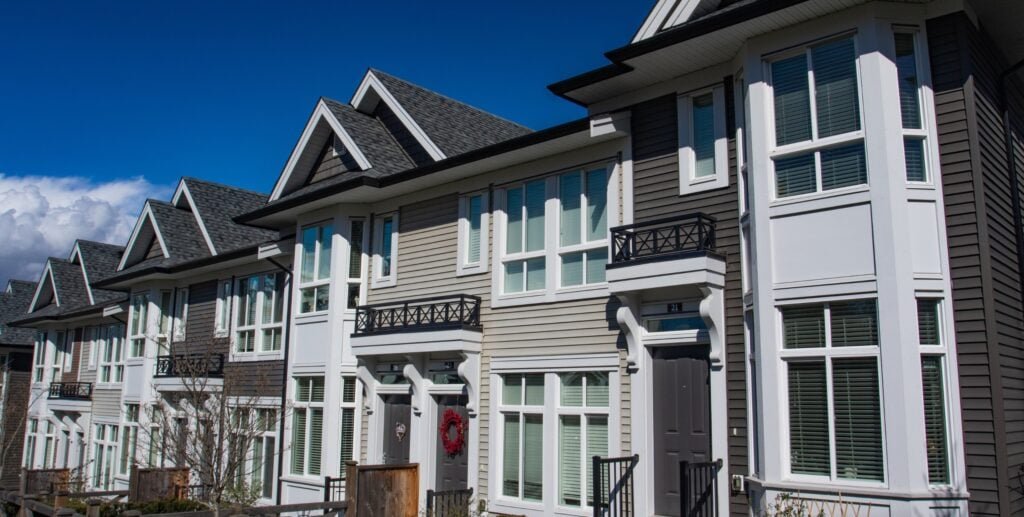Fannie Mae has lowered its down payment requirement for owner-occupied multifamily property loans, effective Nov. 18.
The move has been hailed as a breakthrough for real estate investors—and prospective homeowners—as it makes it significantly easier to buy an investment property with less cash. The decision comes at just the right time, given the current high-interest rate climate that has hit real estate affordability hard.
Borrowers will now need just 5% of the total multifamily home value as a down payment, as opposed to the 15% to 25% required prior to the policy change. The change affects loans on duplexes, triplexes, and fourplexes.
What Are the Requirements for the New Multifamily Home Loan Program?
The most important requirement to be aware of is that this is a loan program based on owner-occupancy. This means that the borrower will have to live at the property and act as a resident landlord.
The major upside of this requirement is that future rental income can be used to qualify for a mortgage loan. While future rental payments alone won’t make you qualify—you must also meet current income requirements and be paying rent where you currently live—they can count toward the total income requirement for the loan.
Even better, Fannie Mae has removed the FHA self-sufficiency test requirement for 3-4-unit property loans. The FHA self-sufficiency test requires 75% of the rental income from 3-4-unit properties to be greater than the monthly mortgage repayment amount. Under the new rule, 3-4-unit properties will not need to meet this threshold. Removing the requirement will make getting pre-approved for a mortgage on a multifamily home easier.
The cap on the 2-4-unit loans under the program has been set at $1,396,800, which significantly expands the pool of properties available to investors to include expensive and more luxurious homes. This is obviously significant for beginning investors in more expensive areas, where they previously would have been priced out of the multifamily unit market.
HomeReady loans for low-income borrowers and HomeStyle Renovation loans also qualify under the policy change, which is great news for those real estate investors interested in house flipping or the BRRRR method.
With the HomeStyle Renovation loan, the total loan amount factors in the costs of the proposed renovations. The HomeReady and HomeStyle options exclude high-LTV refinancing and manufactured housing. Renovator-investors will once again need to remember the owner-occupancy requirement.
Prospective borrowers also need to be aware that high-balance loans and manually underwritten loans are excluded from the policy change.
Benefits of the Program
The new program rollout has been praised as progressive and timely by mortgage professionals. When speaking to National Mortgage Professional, Donielle Geiser, chief operations officer of Thrive Mortgage, called the lowered down payment requirement a ‘‘golden opportunity’’ for prospective homeowners and budding investors ‘‘looking to engage in a smart way of not only building equity but also adding an additional revenue stream. One of the surest ways to build wealth over time is to offset a liability with an income-producing asset.’’
Becoming an owner-landlord also reduces some of the administrative burdens that a first-time investor may be unprepared for. Valuable experience in managing a property and tenants is already built into this program because of the owner-occupier requirement.
The potential downside, of course, is that you, the investor, will have to live alongside your tenants in a multifamily unit, which won’t appeal to everyone. The owner-occupancy requirement also means that the principal borrower will need to move into the property within 60 days of completing the purchase and live in the property for at least a year.
You’ll also need to factor the inevitable property maintenance expenses into your budget, which means that the rental income you receive may end up covering less of your own mortgage than you would like.
Still, the additional responsibilities and potential sacrifices of privacy will be worth it for many who have dreamed of real estate investing but have lacked the cash needed to enter the real estate investment market.
When Can I Apply for the New Fannie Mae Loan?
You can apply now. Fannie Mae’s mortgage software has been updated to reflect the policy change, and can now receive applications for the 5% down payment multifamily loans. Some relevant details will be ironed out toward the end of November—for example, private mortgage insurance companies have yet to release their rates for the 5% mortgages—but you can gather all the necessary documentation and begin the application process now.
Ready to succeed in real estate investing? Create a free BiggerPockets account to learn about investment strategies; ask questions and get answers from our community of +2 million members; connect with investor-friendly agents; and so much more.
Note By BiggerPockets: These are opinions written by the author and do not necessarily represent the opinions of BiggerPockets.




